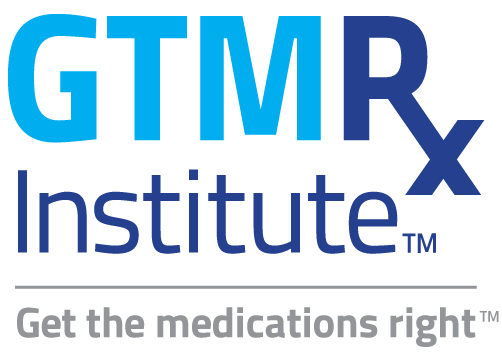
Steven Chen, PharmD, FNAP
GTMRx distinguished fellow, associate dean for clinical affairs at USC School of Pharmacy
May 4, 2022
CMMI-funded pilot shows that CMM embedded within advanced primary care is scalable, sustainable, and successful
Comprehensive medication management embedded within primary care provides a scalable and sustainable way to achieve the Quadruple Aim. That’s the theme of a recent GTMRx issue brief in which Michael Hochman, MD, MPH, CEO of Healthcare in Action, SCAN Group and I shared the results of a Center for Medicare and Medicaid Innovation (CMMI) Round 1 Healthcare Innovation Award program. The brief is based on a Health Care Value Week panel discussion we participated in, along with Katherine H. Capps, GTMRx executive director. GTMRx was one of the Value Week sponsors.
The CMMI funding allowed my team at the University of Southern California School of Pharmacy, in collaboration with AltaMed Health Services, to evaluate the impact of providing CMM services for high-risk patients. It was, in short, a success.
The pilot basics
Funding: a three-year, $12 million grant
Patients targeted: high-cost, high-risk patients
Intervention: Provide CMM until each of the approximately 6,000 enrolled primary care patients reached their treatment goal, no matter however many visits were required. Participating patients met with clinical pharmacy teams and received a comprehensive evaluation of medication-related barriers to their treatment goals. Through collaborative practice agreements, the clinical pharmacists modified drug therapy, ordered tests for monitoring efficacy and safety and followed up with each patient to ensure treatment success.
Followup: Specially trained pharmacy technicians, who are often culturally and linguistically aligned with the population served, provided follow up after the patients left the program.
The teams identified and addressed over 67,000 drug-related problems.
Here a few of the results:
- Outcomes and safety: Within 45 days, almost 90% achieved target blood pressure. For diabetes and cholesterol, patients saw an approximately 10% absolute difference in reaching treatment targets versus usual care.
- Cost of care: The pilot lowered costs for patients at risk of readmission for the few hundred patients with previous admission. The cost savings from the small cohort accounted for almost 1/3 of the entire program cost, consistent with findings from most CMM programs targeting patients with previous hospital admissions yielding a maximum ROI.
- Physician satisfaction: During the program not only were participating physicians pleased, but physicians from the control clinic locations found out about the program and started referring their patients to the intervention sites. And when the three years were up, clinicians wanted to keep the program going.
- Patient satisfaction: On a validated scale with an overall rating of one to 10, patients in the CMM program gave an average rating of 9.7.
Scaling up
Based on this pilot, the USC School of Pharmacy launched the California Right Meds Collaborative in September 2020. It has been a success, proving to be both sustainable and scalable because of valued-based arrangements with health plans.
Again, the outcomes are impressive:
- A1C reductions of 2.4 points from baseline.
- Systolic blood pressure dropped 23 points from baseline.
- For statin use, baseline was only 42% of patients that should have been on a statin. Now the figure is approaching 95%.
The program is now going statewide. Not only are patients and physicians satisfied: Participating payors are happy with the results, and more are reaching out to participate.
Making the case
Our USC story is just one of many demonstrating that CMM is sustainable and scalable, is a value driving element of primary care so should be considered for any advanced primary care model and that it meets all four goals of the Quadruple Aim.
Frankly, it’s the only way forward. Nearly 30% of adults take five or more medications, (1) and we know that many of those medications are unnecessary, being taken incorrectly or otherwise causing harm. More than 275,000 die each year because of non-optimized medication use. The financial cost tops $528 billion annually. (2)
Programs that optimize medication use through CMM in practice offer a solution. What happened with USC and AltaMed and the California Right Meds Collaborative can happen around the country—if we let it. To find out more, check out the Health Care Value Week resources GTMRx compiled at gtmr.org/gtmrx-value-based-care-resources/.
- Medication Errors. June 2017, http://psnet.ahrq.gov/primers/primer/23/medication-errors
- Watanabe JH, McInnis T, Hirsch JD. Cost of prescription drug-related morbidity and mortality. Ann Pharmacother 2018;52(9):829-37. https://doi.org/10.1177/1060028018765159

